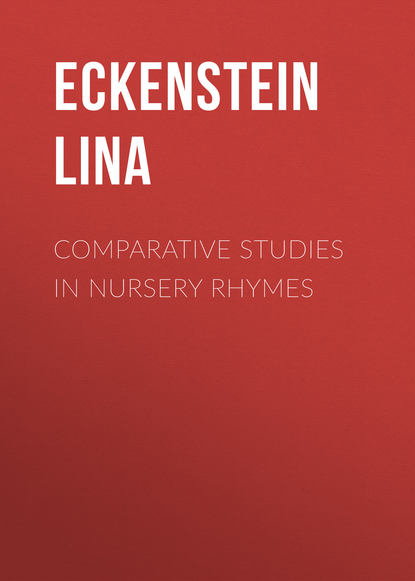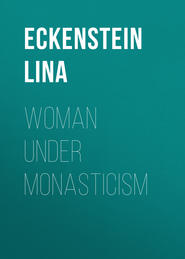По всем вопросам обращайтесь на: info@litportal.ru
(©) 2003-2024.
✖
Comparative Studies in Nursery Rhymes
Настройки чтения
Размер шрифта
Высота строк
Поля
Tommy Linn has no boots to put on,
But two calves' skins and the hair it was on.
They are open at the side and the water goes in,
Unwholesome boots, says Tommy Linn.
Tommy Linn had no bridle to put on,
But two mouse's tails that he put on.
Tommy Linn had no saddle to put on,
But two urchins' skins and them he put on.
Tommy Linn's daughter sat on the stair,
O dear father, gin I be not fair?
The stairs they broke and she fell in,
You're fair enough now, says Tommy Linn.
Tommy Linn had no watch to put on,
So he scooped out a turnip to make himself one;
He caught a cricket and put it within,
It's my own ticker, says Tommy Linn.
Tommy Linn, his wife, and wife's mother,
They all fell into the fire together;
Oh, said the topmost, I've got a hot skin,
It's hotter below, says Tommy Linn.
(1849, p. 271.)
Several short nursery rhymes are taken from this, or other versions of this poem. Among the pieces printed by Chambers we read —
Tam o' the Lin and his bairns,
Fell i' the fire in others' arms!
Oh, quo' the bunemost, I ha'e a hot skin!!
It's hotter below, quo' Tam o' the Lin!!!
(1870, p. 33.)
Sir Walter Scott in Redgauntlet cites a catch on Sir Thom o' Lyne.
In some nursery collections the adventures of Tommy Lin, the Scotchman, are appropriated to Bryan O'Lin, the Irishman.
Bryan O'Lin had no watch to put on,
So he scooped out a turnip to make himself one:
He caught a cricket and put it within,
And called it a ticker, did Bryan O'Lin.
Bryan O'Lin had no breeches to wear,
So he got a sheepskin to make him a pair:
With the skinny side out and the woolly side in,
Oh! how nice and warm, cried Bryan O'Lin.
(1842, p. 212.)
Many nursery rhymes which dwell on cats are formed on the model of these verses. A rhyme that comes from America is as follows: —
Kit and Kitterit and Kitterit's mother,
All went over the bridge together.
The bridge broke down, they all fell in,
"Good luck to you," says Tom Bolin.
A modern collection of rhymes (1873, p. 136) gives this as follows: —
The two grey cats and the grey kits' mother,
All went over the bridge together;
The bridge broke down, they all fell in,
May the rats go with you, sings Tom Bowlin.
The association of cats with Tommy Linn reappears in the rhyme in which Tommy, who in the romantic ballad begged immersion for himself, practised immersion on a cat. Perhaps the cat was figured as a witch, who, being suspected, was cast into the water in order to prove her witchcraft.
Ding dong bell, poor pussy has fall'n i' th' well,
Who threw her in? Little Tom O' Linne,
What a naughty boy was that
To drown poor pussy cat,
That never did any harm,
But catch'd a mouse i' th' barn.
(1797, cited by Rimbault.)
Other variations of this rhyme mention Johnny Green (c. 1783, p. 23) and Tommy Quin (Rusher), which, considering the relative antiquity of Tommy Linn, are obvious degradations of this name.
The rhyme in some collections is quoted in an enlarged form: —
Who put her in? Little Tommy Lin,
Who pulled her out? Little Tommy [or Dickey] Stout.
I have heard also: —
Who put her in? Little Tommy Thin.
Who pulled her out? Little Tommy Stout.
Stout is perhaps a traditional name. For it occurs in the nursery piece on the old woman who went to sleep out of doors and forgot her identity. I know no earlier version of this piece in English than the one recorded by Rimbault which begins:
There was a little woman as I've heard tell,
Who went to market her eggs for to sell.
It further relates how she went to sleep out of doors, how the man Stout "cut her petticoats round about," and how on waking she did not know herself, and decided to go home and find out if her dog knew her (1864, p. 6). But the story is an old one, for we come across it in Grimm's Fairy Tales, where it forms a sequel to "Kluge Else," (No. 35). In this the part of Stout is taken by the woman's husband, who hung her skirt about with bells, and it is further stated that the woman fell asleep when she was cutting corn. The same story in a more interesting form was recovered in Norway. Here we read that the woman fell asleep while she was cutting hemp, which explains why her mind failed her. For hemp newly cut has strongly narcotic properties. It was probably the herb which the witches smoked in their diminutive clay-pipes in pre-Christian times. Presumably on account of these narcotic properties sowing and cutting of hemp were associated all over Europe with peculiar dances, such as Enfille aiguille, our Thread-the-Needle. Its connection with heathen rites of divination is suggested by the well-known rhyme: —
Hemp-seed I set, hemp-seed I sow,
The young man whom I love,
Come after me and mow.
(1890, p. 414.)
In this form the rhyme is also cited in Mother Bunch's Closet newly broke open, as a charm to secure the vision of one's future husband.
CHAPTER VI
But two calves' skins and the hair it was on.
They are open at the side and the water goes in,
Unwholesome boots, says Tommy Linn.
Tommy Linn had no bridle to put on,
But two mouse's tails that he put on.
Tommy Linn had no saddle to put on,
But two urchins' skins and them he put on.
Tommy Linn's daughter sat on the stair,
O dear father, gin I be not fair?
The stairs they broke and she fell in,
You're fair enough now, says Tommy Linn.
Tommy Linn had no watch to put on,
So he scooped out a turnip to make himself one;
He caught a cricket and put it within,
It's my own ticker, says Tommy Linn.
Tommy Linn, his wife, and wife's mother,
They all fell into the fire together;
Oh, said the topmost, I've got a hot skin,
It's hotter below, says Tommy Linn.
(1849, p. 271.)
Several short nursery rhymes are taken from this, or other versions of this poem. Among the pieces printed by Chambers we read —
Tam o' the Lin and his bairns,
Fell i' the fire in others' arms!
Oh, quo' the bunemost, I ha'e a hot skin!!
It's hotter below, quo' Tam o' the Lin!!!
(1870, p. 33.)
Sir Walter Scott in Redgauntlet cites a catch on Sir Thom o' Lyne.
In some nursery collections the adventures of Tommy Lin, the Scotchman, are appropriated to Bryan O'Lin, the Irishman.
Bryan O'Lin had no watch to put on,
So he scooped out a turnip to make himself one:
He caught a cricket and put it within,
And called it a ticker, did Bryan O'Lin.
Bryan O'Lin had no breeches to wear,
So he got a sheepskin to make him a pair:
With the skinny side out and the woolly side in,
Oh! how nice and warm, cried Bryan O'Lin.
(1842, p. 212.)
Many nursery rhymes which dwell on cats are formed on the model of these verses. A rhyme that comes from America is as follows: —
Kit and Kitterit and Kitterit's mother,
All went over the bridge together.
The bridge broke down, they all fell in,
"Good luck to you," says Tom Bolin.
A modern collection of rhymes (1873, p. 136) gives this as follows: —
The two grey cats and the grey kits' mother,
All went over the bridge together;
The bridge broke down, they all fell in,
May the rats go with you, sings Tom Bowlin.
The association of cats with Tommy Linn reappears in the rhyme in which Tommy, who in the romantic ballad begged immersion for himself, practised immersion on a cat. Perhaps the cat was figured as a witch, who, being suspected, was cast into the water in order to prove her witchcraft.
Ding dong bell, poor pussy has fall'n i' th' well,
Who threw her in? Little Tom O' Linne,
What a naughty boy was that
To drown poor pussy cat,
That never did any harm,
But catch'd a mouse i' th' barn.
(1797, cited by Rimbault.)
Other variations of this rhyme mention Johnny Green (c. 1783, p. 23) and Tommy Quin (Rusher), which, considering the relative antiquity of Tommy Linn, are obvious degradations of this name.
The rhyme in some collections is quoted in an enlarged form: —
Who put her in? Little Tommy Lin,
Who pulled her out? Little Tommy [or Dickey] Stout.
I have heard also: —
Who put her in? Little Tommy Thin.
Who pulled her out? Little Tommy Stout.
Stout is perhaps a traditional name. For it occurs in the nursery piece on the old woman who went to sleep out of doors and forgot her identity. I know no earlier version of this piece in English than the one recorded by Rimbault which begins:
There was a little woman as I've heard tell,
Who went to market her eggs for to sell.
It further relates how she went to sleep out of doors, how the man Stout "cut her petticoats round about," and how on waking she did not know herself, and decided to go home and find out if her dog knew her (1864, p. 6). But the story is an old one, for we come across it in Grimm's Fairy Tales, where it forms a sequel to "Kluge Else," (No. 35). In this the part of Stout is taken by the woman's husband, who hung her skirt about with bells, and it is further stated that the woman fell asleep when she was cutting corn. The same story in a more interesting form was recovered in Norway. Here we read that the woman fell asleep while she was cutting hemp, which explains why her mind failed her. For hemp newly cut has strongly narcotic properties. It was probably the herb which the witches smoked in their diminutive clay-pipes in pre-Christian times. Presumably on account of these narcotic properties sowing and cutting of hemp were associated all over Europe with peculiar dances, such as Enfille aiguille, our Thread-the-Needle. Its connection with heathen rites of divination is suggested by the well-known rhyme: —
Hemp-seed I set, hemp-seed I sow,
The young man whom I love,
Come after me and mow.
(1890, p. 414.)
In this form the rhyme is also cited in Mother Bunch's Closet newly broke open, as a charm to secure the vision of one's future husband.
CHAPTER VI






